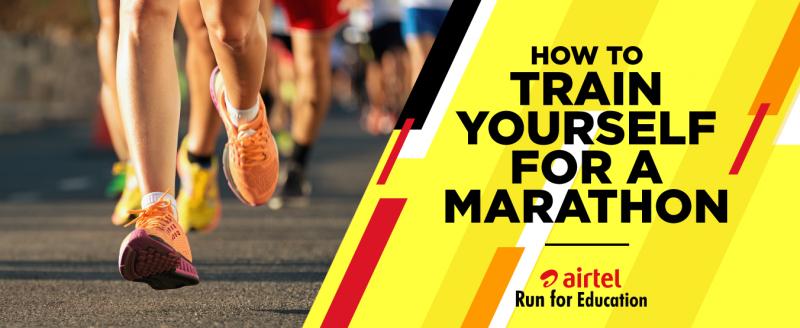According to Keflezighi, U.S. Olympic Marathoner “Like the marathon, life can sometimes be difficult, challenging and present obstacles.However, if you believe in your dreams and never give up, things will turn out for best”.
There are many ways to keep our body healthy which would automatically refresh our mind.Running is always considered to be good for health and if it can be associated with a good cause that’s even better. Here is what you need to know to run your best marathon at Airtel Run For Education 2017 and join hands to educate the underprivileged.
These are the few guidelines to prepare yourself before running a marathon :
- Achieve a base fitness level – Do you know how fit you are right now? If you can’t run, walk, bike, or do some other aerobic activity for at least 30 minutes at a time, you will need to work up to this first before attempting any running program. The first step is to talk to your doctor about a fitness assessment and to explain your intentions to begin training for a marathon.
- Get yourself a Running Gear – Fortunately running gear isn’t that expensive and there are plenty of good sports stores selling decent gear. Of most importance is the gear for your feet, and while some marathon runners have always preferred running barefoot, most people prefer a supportive shoe. Shoes should support the foot and protect it; begin by knowing how your foot needs supporting. There are three basic types of foot––pronator (strike the ground with the outside and back of the heel), supinators (land on the outside of the foot and roll outward) and neutral (a combination of these elements).
- Adopt a good running style suited to you: Before you even begin to train, assess your posture and seek to do the right thing from the outset. While there is no single correct way to hold yourself, you should aim to be relaxed and to hold your torso upright and your spine straight.
- Get started: Train on easy routes, to begin with, and avoid inclines or anything that might make the run difficult or uncomfortable. Aim for short runs to start getting your body used to the feeling of running. Choose an area that is safe, enjoyable and has plenty to look at so that you find the experience interesting enough to want to repeat it! When you first start out, there will be times when you want to run, then walk. Give in to this desire initially, as it’s your body’s way of telling you it needs time to adjust. At least you’re out there, getting going.
- Consider joining a running group or club : Even if you don’t plan on training with the club regularly, it’s a good way to get reputable information and advice and there will undoubtedly be events that you’ll be interested in entering to test your progress. It’s also a great source of motivation to be among people who have similar goals and interests as you.
- Enter your first running race. Many runners consider that it is helpful to train for shorter long distance races as a way of gauging how they’re doing; shorter distances allow you to assess your performance and readiness for longer distances. Local fun runs of 5 to 10 km (3 – 6 miles) are a great way to start out, as well as any shorter long distance runs held by clubs or running groups. When you actually run the race, don’t presume to place yourself at the front; take your time and pace yourself by staying with those of a similar ability to you. Being caught up with fast runners can exhaust you and be a very demoralizing first-time experience; eventually you’ll get there if that’s what you want but for now, it’s about pacing yourself and actually getting through the race
- Consider running a Full Marathon: Once you feel that you’re comfortable with running and you’ve proven to yourself that you’ve built up the needed stamina and longer distances, consider committing to a full marathon – Choosing which marathon you want to run is one of the best ways to inform your ongoing training. Not only do you turn your general plan (running a marathon) into a specific one (running the New York City Marathon on November 5th), but once you’ve invested the registration fee (typically between $40-$100) you have an extra financial incentive to run it, too! In general, once you’re ready to give the marathon a go, give yourself around 18 weeks before a marathon to train to an adequate level, more if you feel it’s needed.
- Settle on a marathon training plan: Again, as with the half marathon, you’ll need to do the research into an appropriate training plan matching your fitness, abilities, and terrain to be run. And you must have a plan––those without one often fail to make the marathon starting line. Any training plan that you choose should involve a gradual building up of distance from the half marathon level. Good plans will start with 3 to 16 km (2 to 10 mile) runs that gradually build up and include varied terrains such as hills and beaches. Importantly, be absolutely aware that there are no shortcuts to building up your mileage endurance––anything offering a build-up to readiness within two months or less should be avoided like the plague! Try to vary some of your training areas––after a time, monotony may set in and a change of scenery can help improve your enthusiasm, as well as keeping a firm eye on your goal.
These tips will help you to make sure that you run the best marathon of your life, stick to the basic and win the game. Will see you all at the Airtel Run for Education 2017, Kolkata on November 26.


Leave A Comment